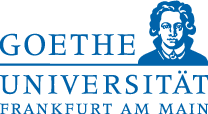|
 The Ultrashort Pulse Spectroscopy and Terahertz Physics group leaded by Prof. Hartmut Roskos hosts the newly established Terahertz Photonics group leaded by Prof. Viktor Krozer at the Physics Institute of the Johann Wolfgang Goethe-Universität Frankfurt am Main. Both groups share their extensive THz expertise and laboratories and currently count 2 professors, 5 postdocs, and 8 PhD Students. Both groups cover a large part of the research on THz devices, components and systems from fundamental physical phenomena to industrial applications. The group is supporting a newly established spin-off company Synview GmbH, which produces imaging systems for industrial and security applications. The group of Prof. Roskos focuses on ultra short phenomena in semiconductors and metal organic molecules, fundamental physical phenomena in the THz frequency range, development of electronic and photonic components for THz frequencies, and on THz imaging system development and its application in the fields of research, industry and security. The group of Prof. Krozer focuses on the modelling of electronic and photonic devices, circuit and component development for THz frequencies including monolithic integration, high-speed transistor based millimetre-wave integrated circuits, development of submillimetre-wave components for terrestrial and space applications and, in cooperation with Roskos group, on imaging systems for medical, industrial and security applications. Special attention is put on the development of dedicated signal sources and detectors for the frequency range. The Ultrashort Pulse Spectroscopy and Terahertz Physics group leaded by Prof. Hartmut Roskos hosts the newly established Terahertz Photonics group leaded by Prof. Viktor Krozer at the Physics Institute of the Johann Wolfgang Goethe-Universität Frankfurt am Main. Both groups share their extensive THz expertise and laboratories and currently count 2 professors, 5 postdocs, and 8 PhD Students. Both groups cover a large part of the research on THz devices, components and systems from fundamental physical phenomena to industrial applications. The group is supporting a newly established spin-off company Synview GmbH, which produces imaging systems for industrial and security applications. The group of Prof. Roskos focuses on ultra short phenomena in semiconductors and metal organic molecules, fundamental physical phenomena in the THz frequency range, development of electronic and photonic components for THz frequencies, and on THz imaging system development and its application in the fields of research, industry and security. The group of Prof. Krozer focuses on the modelling of electronic and photonic devices, circuit and component development for THz frequencies including monolithic integration, high-speed transistor based millimetre-wave integrated circuits, development of submillimetre-wave components for terrestrial and space applications and, in cooperation with Roskos group, on imaging systems for medical, industrial and security applications. Special attention is put on the development of dedicated signal sources and detectors for the frequency range.
The groups have three relevant measurement systems available which are able to investigate amplification in the 0.1 – 1 THz range. The group operates several electronic sources at
200 – 600 GHz. Photonic systems provide free-space THz pulses with a bandwidth exceeding
1 THz. Two of the systems operate at a high pulse repetition rate around 100 MHz, while the third is a system with a low repetition rate and high peak-power based on an amplifier laser. THz detection can be done in two ways: via time-domain spectroscopy (using electro-optical detectors) and Fourier transformation of the time-domain data, or directly in the frequency domain using a Michelson interferometer and a power detector (a He-cooled bolometer or a Golay cell). A photomixing setup is also available, but it is more on a research level and provides relatively low output power. Details on the measurement systems are given below:
-
Pump laser: 800-nm femtosecond Ti:sapphire laser, 82 MHz repetition rate.
THz generation: surface emitter or electro-optic crystal. Frequency range covered:
100 GHz - 2.5 THz
- Pump laser: 1054-nm femtosecond Nd:glass laser, 100 MHz repetition rate.
THz generation: InAs surface emitter. Frequency range covered: 100 GHz - 1.5 THz
- Pump laser: 775-nm femtosecond Ti:sapphire amplifier laser, 1 kHz repetition rate.
THz generation: laser-generated air plasma or large-area electro-optic crystal. Frequency range covered: 100 GHz - 10 THz
Role in OPTHER
The Johann Wolfgang Goethe-Universität Frankfurt am Main (GFU) will be responsible for the characterization of the input and output coupling schemes for both the THz amplifier and the optically excited THz source and of the final amplifiers. GFU has the necessary simulation tools (CST Studio Suite) and testing facilities. GFU will also contribute to the exploitation and dissemination of THz systems for security applications.
|
 Project
Project  Partners
Partners  Goethe University
Goethe University  Project
Project  Partners
Partners  Goethe University
Goethe University